|
Messerschmitt Me 262 A-1a
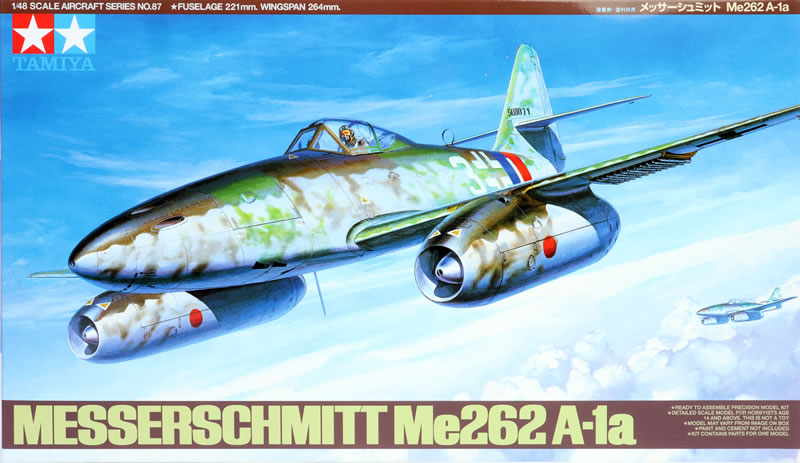
Tamiya, 1/48 scale
S
u m m a r y |
| Catalogue Number: |
Tamiya Kit No. 61087 - Messerschmitt Me 262 A-1a |
| Scale: |
1/48 |
| Contents and Media: |
118 parts in grey coloured plastic; eight parts in clear; white metal nose weight; markings for three aircraft. |
| Price: |
£29.99 UK Price (£24.99 Export Price) plus shipping at Hannants
and hobby retailers worldwide |
| Review Type: |
FirstLook |
| Advantages: |
Modeller-friendly design; high level of detail throughout; crisp and restrained surface textures; useful options including poseable canopy and gun bay, engine access hatches, R4M and W.Gr.21 rockets and choice of nose wheels; nice seated pilot figure. |
| Disadvantages: |
|
| Conclusion: |
In my opinion, even 20 years after its initial release, this is still the best Messerschmitt Me 262 in 1:48 scale. Tamiya's 1:48 scale Messerschmitt Me 262 is still well detailed even by current standards, cleverly engineered and has plenty of useful options. |
Reviewed by Brett Green

Background
The Messerschmitt Me 262 was a German fighter and fighter-bomber aircraft that was the world's first operational jet-powered fighter aircraft.
Design work started before World War II, but problems with engines, metallurgy and top-level interference kept the aircraft from operational status with the Luftwaffe until mid-1944. The Me 262 was faster and more heavily armed than any Allied fighter, including the British jet-powered Gloster Meteor.
One of the most advanced aviation designs in operational use during World War II, the Me 262’s roles included light bomber, reconnaissance and experimental night fighter versions.
Me 262 pilots claimed a total of 542 Allied aircraft shot down, although higher claims are sometimes made. The Allies countered its effectiveness in the air by attacking the aircraft on the ground and during take-off and landing. Strategic materials shortages and design compromises on the Junkers Jumo 004 axial-flow turbojet engines led to reliability problems. Attacks by Allied forces on fuel supplies during the deteriorating late-war situation also reduced the effectiveness of the aircraft as a fighting force. Armament production within Germany was focused on more easily manufactured aircraft. In the end, the Me 262 had a negligible impact on the course of the war as a result of its late introduction and the consequently small numbers put in operational service.*
Tamiya's 1:48 scale Messerschmitt Me 262 family was originally released in 2002. The debut version was the Me 262 A-2a fighter/bomber, which was issued with a 1:48 scale Kettenkraftrad airfield tractor.
The dedicated fighter variant with four nose-mounted MK108 cannon, the Messerschmitt Me 262 A-1a, was released later in the same year.
Tamiya's 1:48 scale Me 262 A-1a comprises 118 parts in grey plastic, eight parts in clear and one white metal piece for the forward landing gear bay that doubles as a hefty nose weight.
The differences between this kit and the original Me 262 A-2a release are the inclusion of the four gun nose, a pair of W.Gr.21 rockets for the fuselage racks and two sets of underwing R4M rockets.
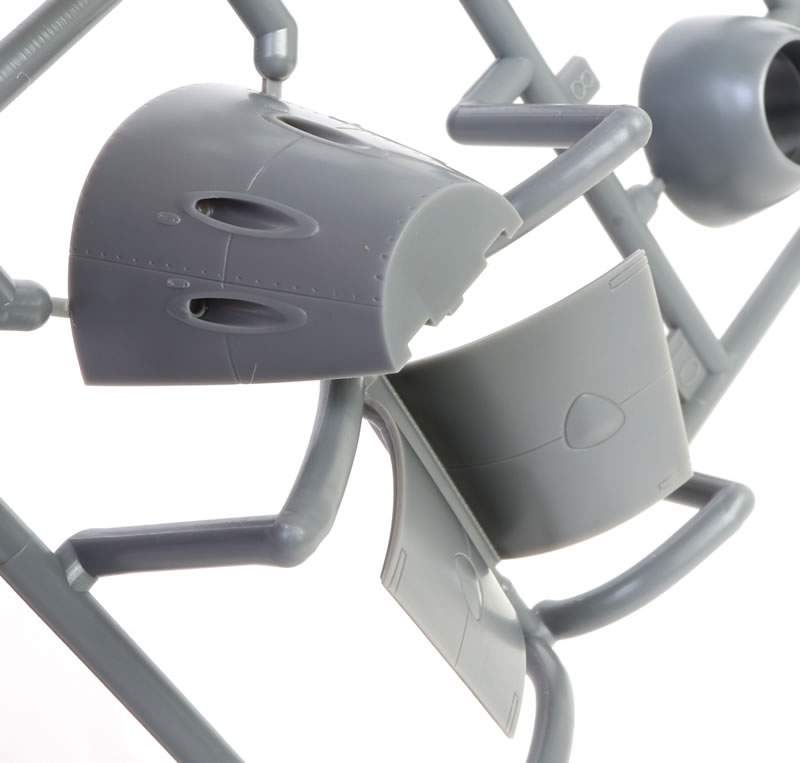
The Kettenkraftrad is not offered in this boxing.
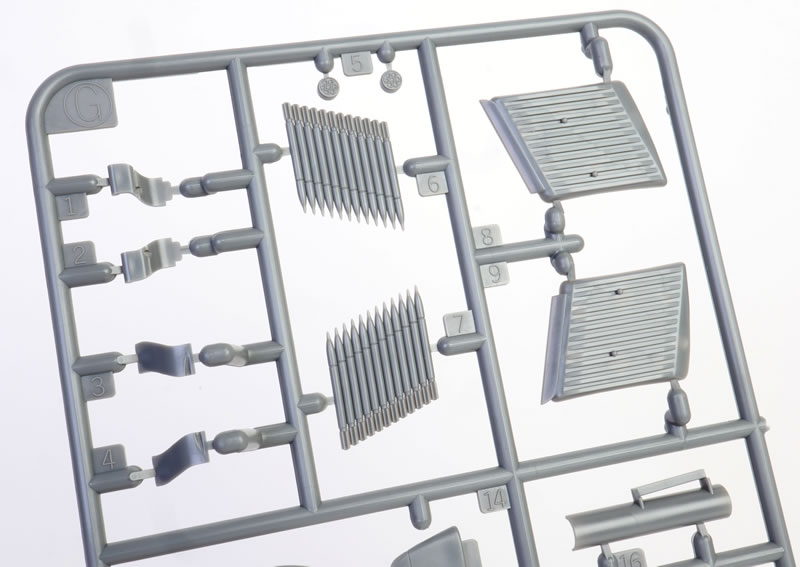
Even two decades after its release, the kit still looks great in the box.
Panel lines are crisply engraved and general levels of detail is good.
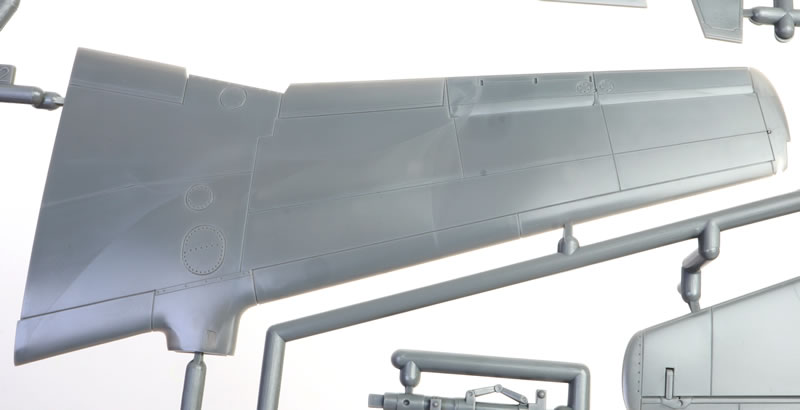
The fuselage interior features raised structural detail. This is especially important inside the fuselage, which is almost completely exposed above the open main undercarriage bay. The purpose of the structural detail and the large locating holes inside the engine nacelles pointed toward the later clear plastic version of the kit with visible Jumo 004s and fuselage halves that was released in 2003. The inside of the forward upper engine access hatches are heavily engraved, making it a simple matter to cut these hatches open for a limited view of the jet powerplants.
The cockpit is fitted out in the usual Tamiya style, with blank instrument faces for decal dials and a decal harness for the seat.
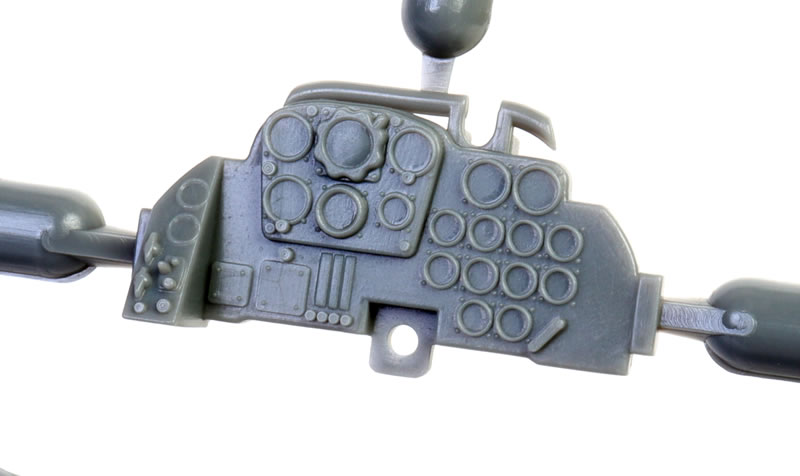
The cockpit tub includes exterior detail for the forward and rear bulkheads plus prominent actuator rods. The cannon bay is simple in breakdown but equally well detailed. Four shell ejector ports are supplied on two separate inserts for the lower nose. The upper and lower joins for these inserts should be filled and sanded as they do not fall on natural panel lines.
The nose gear bay is a white metal part. This will ensure that no additional weight is required to prevent the model becoming a tail-sitter. One of the options is alternative nose wheels - one smooth and one with a radial tread.
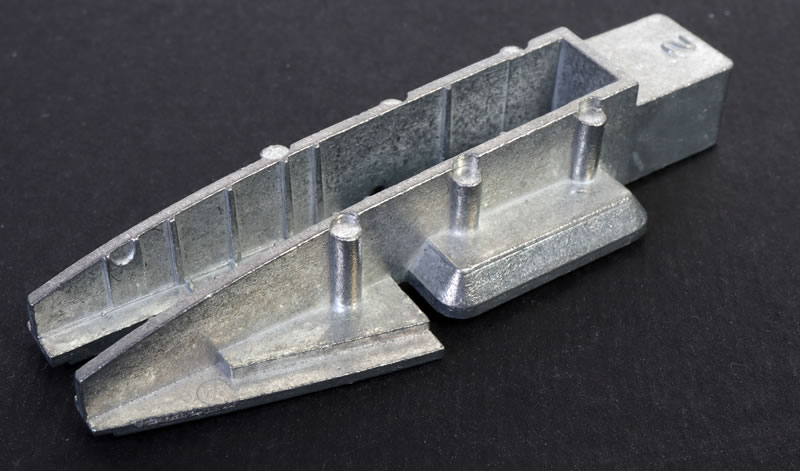
Wings are supplied as a full-span lower section, and separate parts for the upper right and left halves. Flaps and slats are moulded in the closed (up) position. The interior of the wings are reinforced with moulded-on spars that run widthwise and lengthwise. These spars have been carefully designed not to intersect with the flaps or slats. This means that, if the modeller chooses to reposition the flying surfaces themselves, the wings will maintain their rigidity and correct chord even after the flaps and slats have been cut off.
Horizontal tail surfaces are keyed, ensuring positive fit. Another nice touch is the inclusion of separate, delicate trim tab actuators on the elevators.
The choice of open or closed cannon access hatches is offered. The open option supplies a single part with both hatches fixed up, and two separate supporting struts.
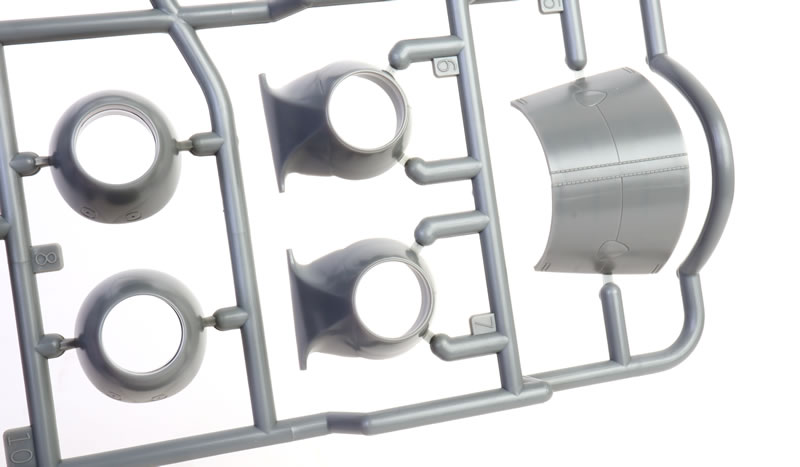
The windscreen is cleverly moulded with a section of the forward upper fuselage deck. The vertical and horizontal joins both fall on panel lines. Furthermore, the internal armoured glass is a separate part that is glued to a locating pin under the front deck section. This will minimise the risk of messing up the windscreen with glue spots. The opening centre section of the canopy is similarly thoughtful. Two tabs are attached to the starboard side of the canopy to secure it in the open position. These tabs should be removed if the canopy is to be displayed closed.
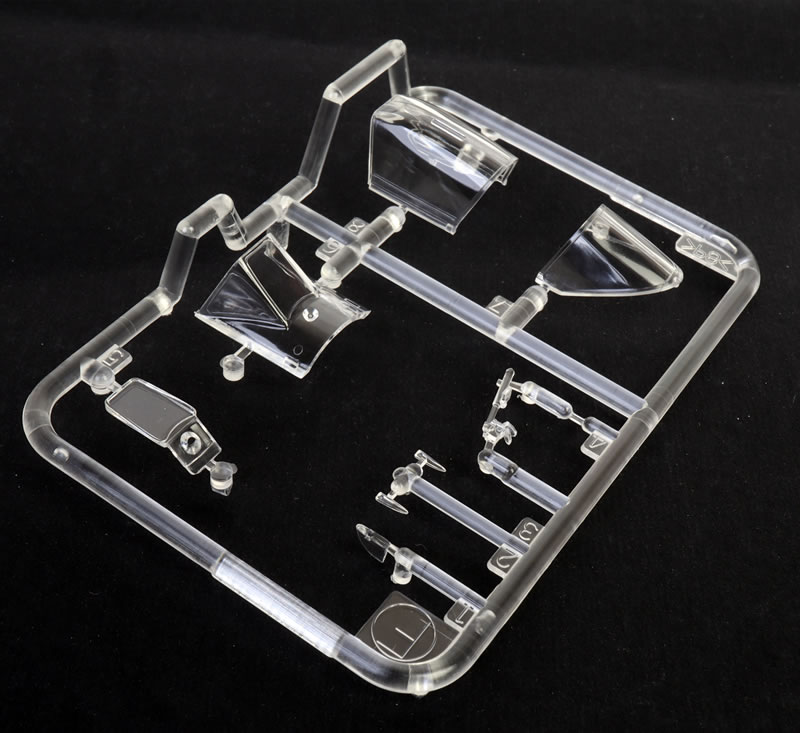
Instructions are called out over 17 illustrated steps. Colour suggestions seem to be reasonable, however the interior of the cannon bay covers were RLM 02 Grey on some Me 262s, not bare-metal silver as noted in the instructions.
Markings
Markings are supplied for three aircraft:
- “Green 1” from III./JG 7, Brandenburd-Briest, March 1945
- “Red 13” from III./EJG 2, Lechfeld, March 1945
- “Red S” from JV 44, Brandenburd-Briest, March 1945
Colours look good and the decals are in register.
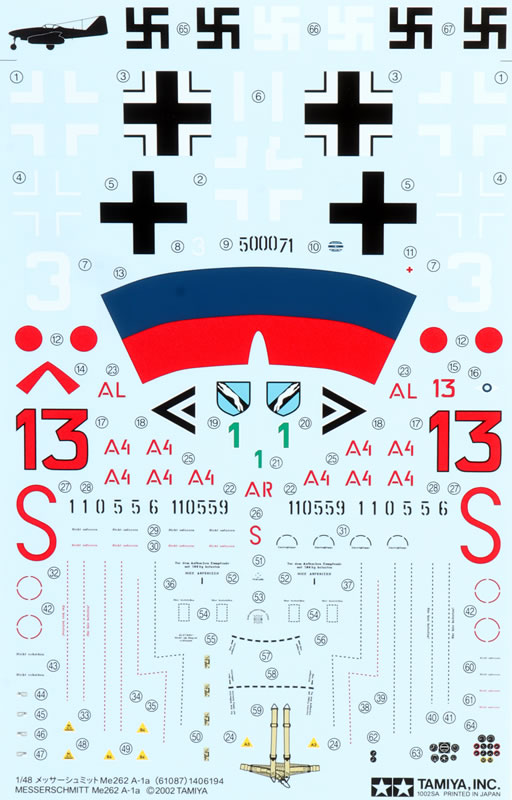
I have heard many complaints about Tamiya kits of this era suffering from thick decals, but I have never found a problem with them. They might look a bit thick on the decal sheet, but they settle down nicely on the model following a coat of Solvaset.
In my opinion, this is still the best Messerschmitt Me 262 in 1:48 scale.
Comparisons with other kits is inevitable. The Trimaster 1:48 scale Me 262 kits were subsequently released under the labels of Dragon, Revell and Italeri. When it was first released I compared my new Tamiya kit with one of my small stash of Trimaster Me 262 variants. In a one-on-one shootout, the Tamiya kit narrowly wins in the detail department with crisper surface features and better interior detail, and is clearly superior to the Trimaster kit in engineering finesse. The moulding quality on later reissues suffered visibly from their long and hard use. Furthermore, the Tamiya kit does not suffer from the terrible, styrene-eating vinyl tyres of the Trimaster/Dragon kits.
The original Trimaster kits supplied nose weight but subsequent reboxings by Dragon, Revell and Italeri did not.
More importantly, having wrestled with one of the Dragon-boxed Me 262 some decades ago, I can assure you that the Tamiya kit is much easier to build.
I have also bought a couple of the Hobby Boss kits, originally released in 2010. I haven’t built one yet but they look good in the box with a strikingly similar parts breakdown to the Tamiya kit, right down to the front wheel well / gun bay white metal nose weight. Tamiya still wins though, with marginally crisper surface and its famous building precision.
One frequent criticism of the Tamiya kit is the absence of separate slats and flaps. Neither the Trimaster-derived, Hobby Boss or Monogram kits had this feature either, so it is a moot point of comparison as far as I am concerned. However, it is true that most operational Me 262s were observed with dropped slats. The after-market offers a few separate flaps and slats for the Tamia kits.
Tamiya's 1:48 scale Messerschmitt Me 262 is still well detailed by the current day’s standard, cleverly engineered and has plenty of useful options.
* Historical summary courtesy of Wikipedia
Purchased with the Editor's own funds
Tamiya kits are distributed in the UK by The Hobby Company Limited
Review Text Copyright © 2022 by
Brett Green
Page Created 25 July, 2022
Last updated
25 July, 2022
Back to HyperScale Main Page
Back to Reviews Page |
